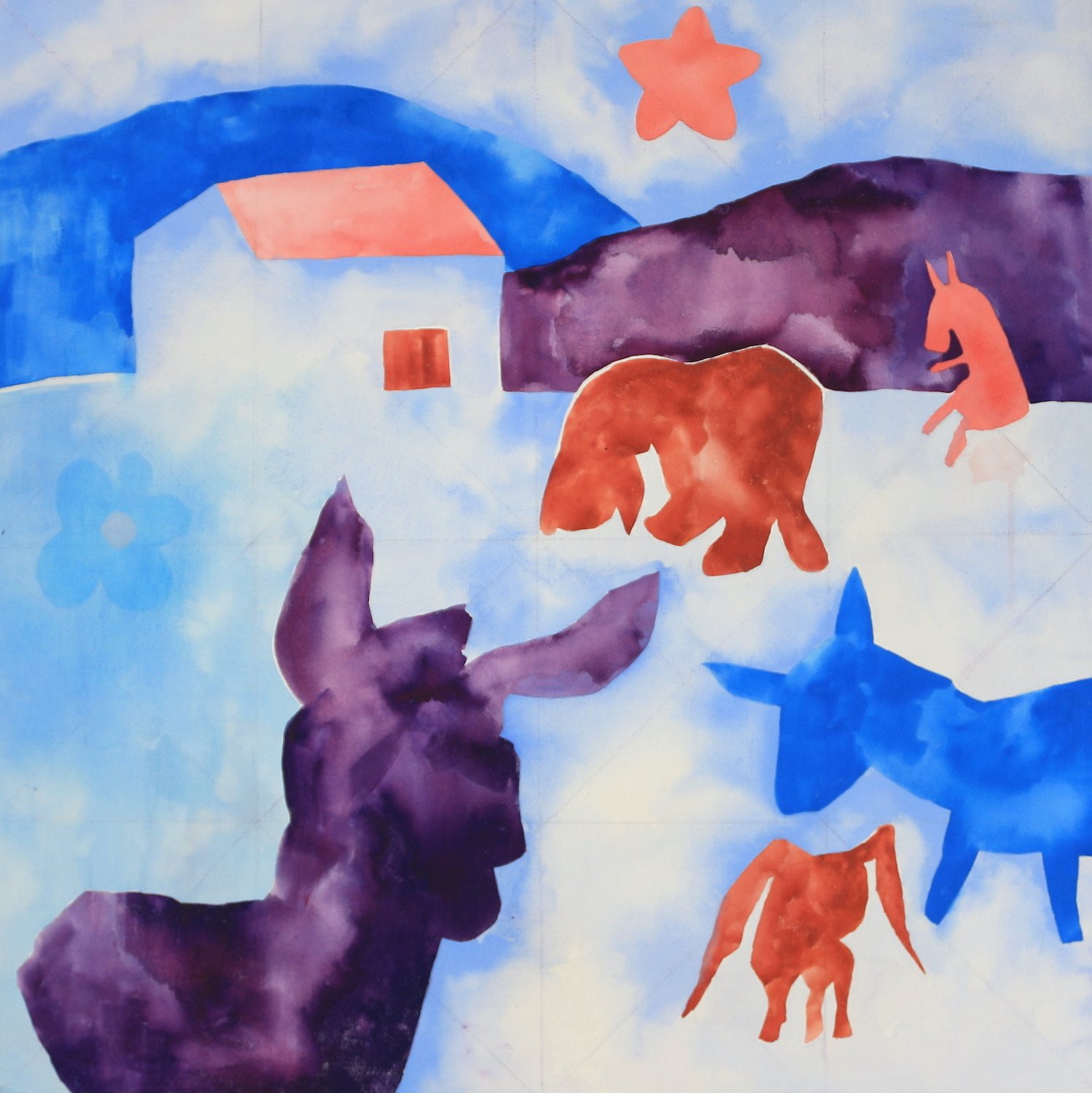Donkeys Lead the Way
By Casey Murano
Artist Statement
“Donkeys see what mortals fail to recognize,” writes Madeleine L’Engle in a poem referencing biblical donkeys, like those who carried Balaam, Mary, and Jesus. So when five new donkeys (Midea, Heehaw, Roxy, Jack, and Henry) arrived at Bethlehem Farm last Advent, I wondered, what wisdom do these creatures bring to the winter season of transformation, of becoming a synodal church? A lead on how to look came in early December when I encountered painterly prints by Corita Kent, a Catholic pop artist from the mid 20th century who plays with popular language, logos, and imagery. She invites viewers to find the Spirit nudging us towards peace and justice in Scriptures stories, yes, and unexpected places: even Wonder Bread. Inspired by Corita’s expansive vision, I researched donkeys who show up in movies and books. Each of the five donkeys outlined in this painting correspond with a well-known(ish) cartoon donkey. Can you name any of them? (It’s Sylvester and the Magic Pebble, Eeyore from Winnie the Pooh, Donkey from Shrek, Benjamin from Animal Farm, Nestor the Long-eared Donkey!) Another place the donkeys nudged me to practice synodality was through the abrupt death of a beloved pastor in December. Our church grieves the loss of this wise elder--one who laughed, challenged, invited, and knew everyone in our large parish by name. Working on this donkey painting brought up the memory of Father Joe acting as a comical nativity donkey in the parish play Like Winter Waiting. I remember his example of being a pastor who is not afraid to smell like his sheep (or donkeys, for that matter). During this Advent journey in particular, donkeys helped me encounter synodal teachers everywhere, nudging us to receive insights on how to journey together with patience, joy, and compassion.
About the Artist
Casey Murano grew up surrounded by the Blue Ridge Mountains in Roanoke, Virginia and is now living on one of those hilltops–just over the West Virginia border at Bethlehem Farm, an intentional Catholic community in Appalachia. Grounded in Bethlehem Farm’s various ministries (such as low-income home repair, gardening, and service retreats) and cornerstones (prayer, simplicity, service, and community), Casey’s art practice reflects the cyclical processes of life in this place and context. She creates works on paper: contemplative maps that explore themes of pilgrimage, placemaking, and displacement. Before Bethlehem Farm, Casey studied art at the University of Richmond and participated in the St. Joseph Worker Program in St. Paul, Minnesota.

